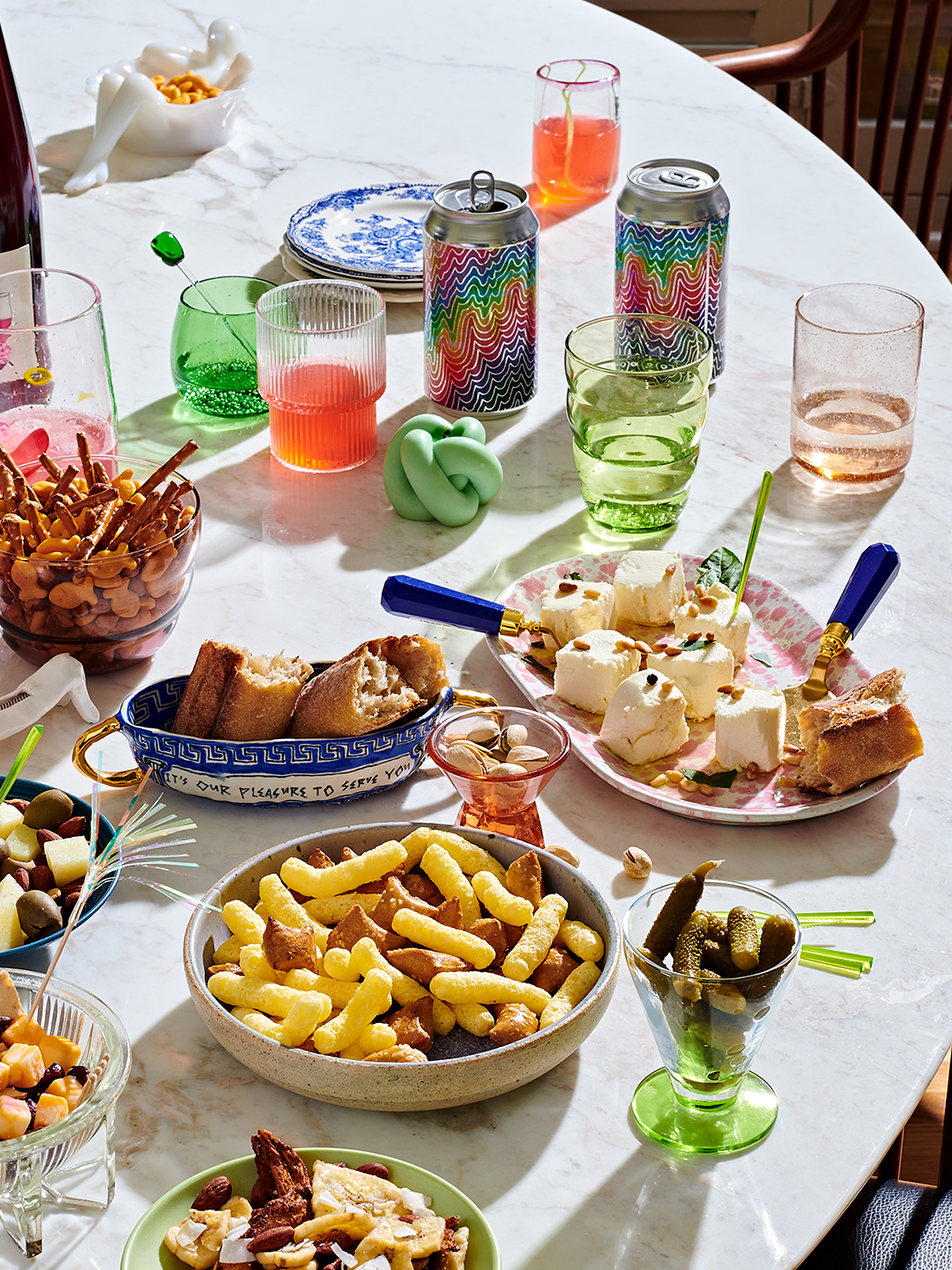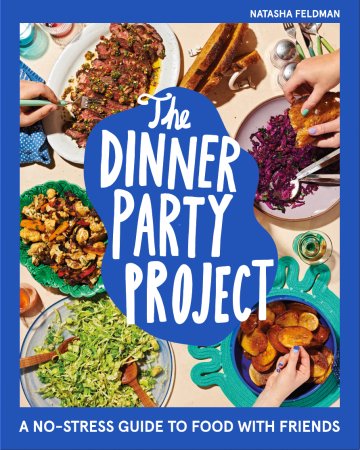We may earn revenue from the products available on this page and participate in affiliate programs.
In her cookbook, The Dinner Party Project, private chef and creator of Nosh With Tash, Nastasha Feldman, doesn’t show you how to fold napkins or steam your tablecloth before company comes over. Instead she teaches you the important things: How to gather the right crowd, find the perfect setting, and arrange a menu that everyone will be talking about for weeks—or until the next shindig, anyway.

In this excerpt, Feldman explains the anatomy of a great dinner hang, whether it’s your first time having friends over or (like her) your hundredth. Party on.
___
After a decade of doing private chef work, teaching approximately one zillion cooking classes, and throwing a few hundred dinner parties, I’ve accumulated a lot of thoughts on hosting, de-stressing dinner parties, and making easy dishes taste really good—all of which I’m very excited to share with you. I’m here to remove the anxiety of entertaining and help you find a hosting style that works for you.
If you’re a person who likes rules and guidance, welcome to this delicious breakdown of how to use this book. If your eyes are bugging out of your head looking at the quantity of words on this page—skip to the next section. There are four steps to getting your dinner party on.

Step 1: Pick Your Peeps
Most of the recipes in this book are for six humans. So let’s do some simple math: If you have six people, all the food will be gobbled up, but if you have a more intimate group of three, then hooray for you, you’ll get leftovers! Find a group of people (close friends, fun neighbors you want to get to know better, cousins you just found out you have via genetic testing, friends of friends, coworkers—you get the idea) who want to dinner party regularly, knowing some will tag in and out, and get on a schedule. Dinner party people are everywhere.
Step 2: Pick Your Place
Your house? Do you have a big enough table? The beach? A neighbor’s porch? A stoop? Everyone takes a turn? Your location may dictate the kinds of food you serve. If you’re going to be in a park, you’ll want foods that are all easy to transport and good at room temp; if you’re gathering around a coffee table, you’ll want a meal that can be eaten on one plate, and so on.
Step 3: Pick Your Style

There are three ways to do this:
Solo
- If you’re at all nervous, pick a few dishes that are great at room temperature so you can prep them ahead of time and not stress during the party. All the salads and vegetable dishes in this book are great at room temp.
- DDD: Delegate Drinks and Desserts to your guests.
- Remember: Having a dinner party is about connecting with your people, having a good time, and not being rushed—it’s not a Top Chef audition. Take the pressure off by making a meal that feels manageable and fun. If that means making one dish from this book and getting everything else premade, that’s A-OK.
Collab Cooking
- Make sure everyone gathers at least two hours before dinner to account for cooking time.
- Decide ahead of time whether you’ll be providing all the ingredients yourself or whether people will shop for the dish they’ll be making.
- Divvy up the recipes and tasks based on people’s skill sets:
The Person Who Lives There: This person will put out the ingredients and necessary tools before everyone arrives. They’ll also be responding to the inevitable questions about where knives, sugar, and olive oil live. And they’ll play sous chef to the Speedy/ Experienced Cook (see below).
The Organized One: This person might not be the greatest cook, but they’re a scheduling wizard. They’ll read through all the recipes for timing and transitions and make a master schedule for the night. They track when something needs to go in or come out of the oven, and they keep everything moving. You got a type-A freak show in your crew? This is their jam.
The Speedy/Experienced Cook(s): Give them the most complex dish—in many cases this will be the main because it has the most moving parts, but take a look at the recipes in your menu to decide. If this person needs help, pull in the sous chef aka the Person Who Lives There.
The Nervous/Newer Cook(s): Give them the salads, easy appetizers, drink mixing, vegetable washing, herb chopping, and any other odd jobs.
The Person Who Doesn’t Know How to Boil Water: This person has two critical roles to fill: Making sure everyone is well hydrated with beverages (adult and otherwise) at all times, and cleaning up. Ideally, this human washes, dries, and puts dishes away immediately, so they’re not taking up space and can be used again.
Potluck
While you can easily send a text or email and let people self-assign, here are a few tips to make your potlucking experience easy-breezy.
- It’s best if the person who lives where the dinner party is prepares the recipes that are best served hot or are clumsy to transport.
- Appetizers, salads, sides, and room temp desserts are great things to ask people to bring.
- DDD.
Step 4: Pick Your Menu

This book has lots of ways to help you decide what to make for dinner. You can use the “What Should I Make for Dinner?” flowchart to take you from “What the Fork Should I Make?” to “Your New Favorite Herby Meatballs” in under two minutes.

From The Dinner Party Project by Natasha Feldman. Copyright © 2023 by Natasha Feldman. Reprinted by permission of Harvest, an imprint of HarperCollins Publishers.


